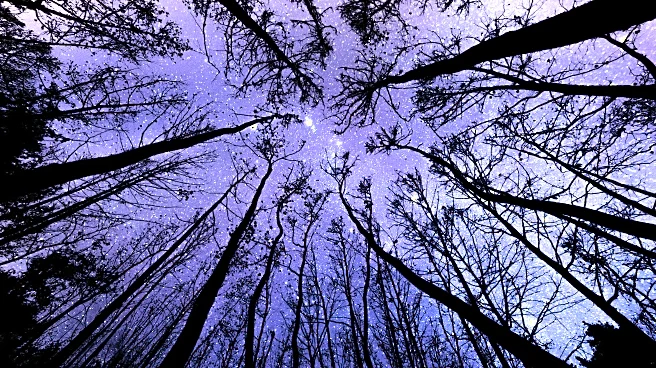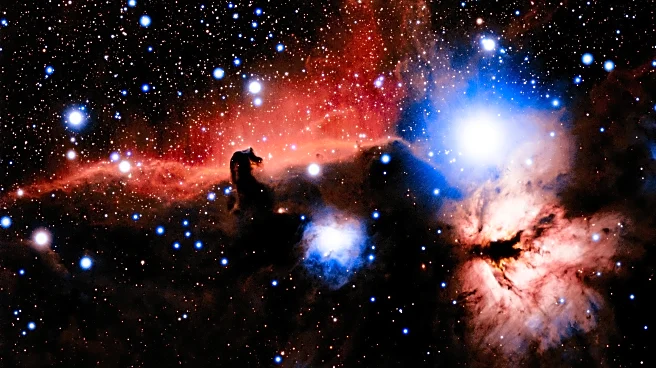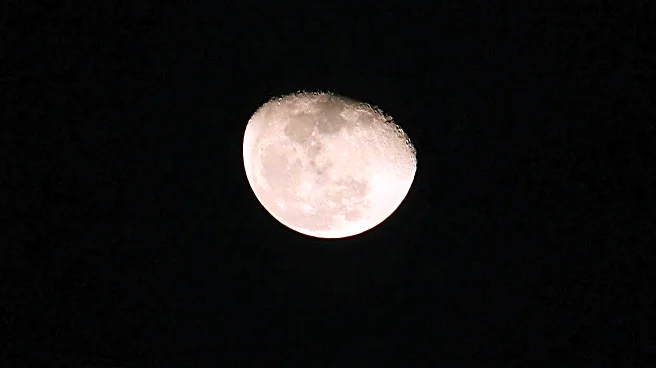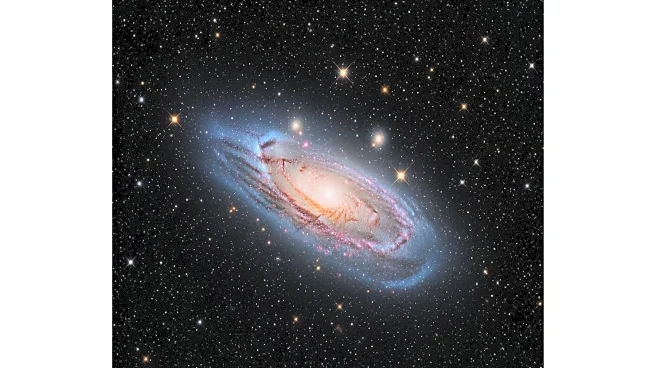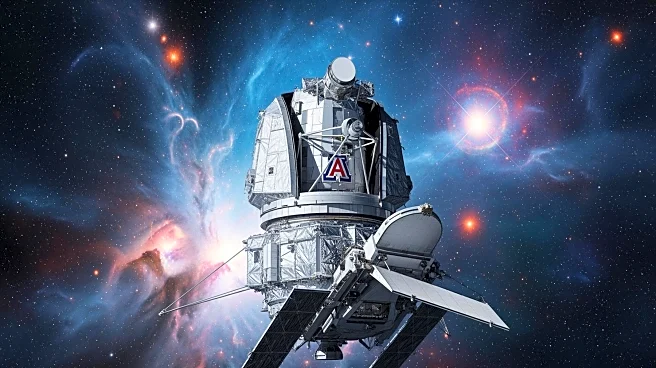What's Happening?
Astronomers have observed a ring system forming around Chiron, a minor planet located between Jupiter and Neptune. Chiron, known for its comet-like and asteroid-like behavior, has been identified as having rings through multiple observation sets. Recent
data from a stellar occultation event in 2023 revealed changes in the rings, suggesting a dynamic environment around Chiron. The observations were conducted by 31 sites across South America, capturing detailed images of the event. The findings indicate that Chiron's rings are evolving, with new structures forming as material ejected by the object settles into its equatorial plane.
Why It's Important?
The discovery of a ring system forming around Chiron provides valuable insights into the dynamics of ring formation around small celestial bodies. This observation offers a rare opportunity to study the intermediate stages of ring system development, potentially serving as a natural laboratory for understanding similar processes around other objects in the Solar System. The evolving rings around Chiron could inform research on the formation and behavior of rings around larger planets, contributing to the broader understanding of planetary science and celestial mechanics.
What's Next?
Continued observations of Chiron are expected to reveal further changes in its ring system, providing more data on the dynamics of ring formation. Astronomers may focus on monitoring the object's behavior during future occultation events to gain deeper insights into the processes shaping its rings. The findings could lead to new theories on ring system evolution and influence future studies of similar phenomena around other celestial bodies.
Beyond the Headlines
The study of Chiron's ring system highlights the importance of collaborative astronomical research and the use of advanced observation techniques. The ability to capture detailed images during occultation events demonstrates the potential for international cooperation in space exploration. This research may also inspire further investigations into the unique characteristics of centaurs and their role in the Solar System.


